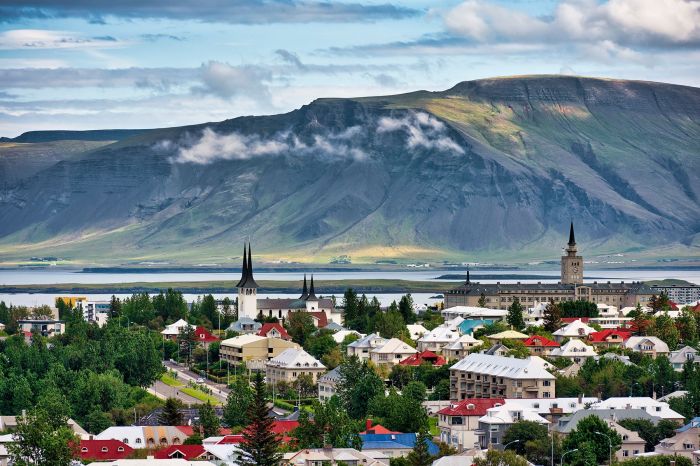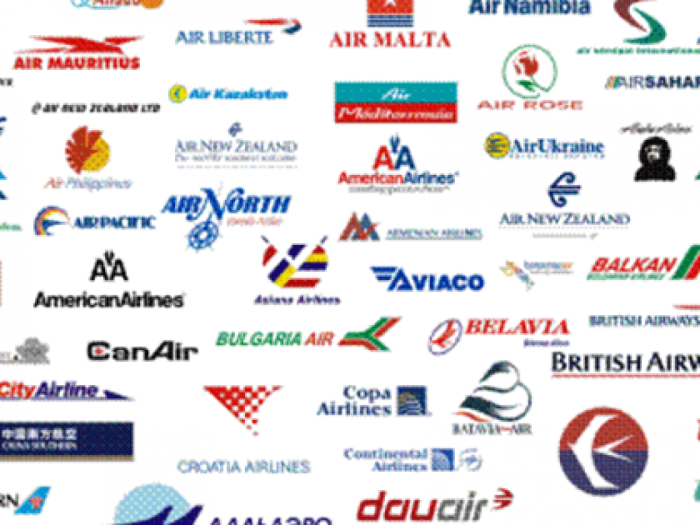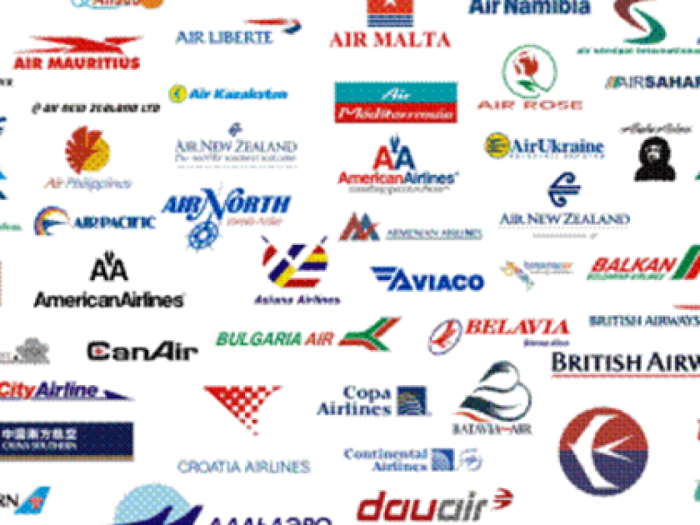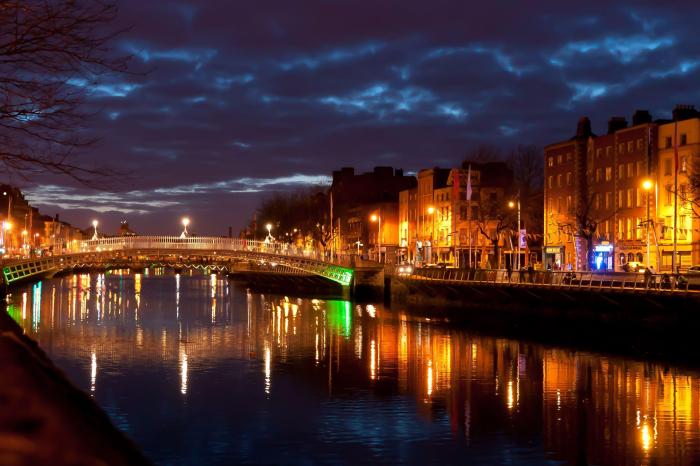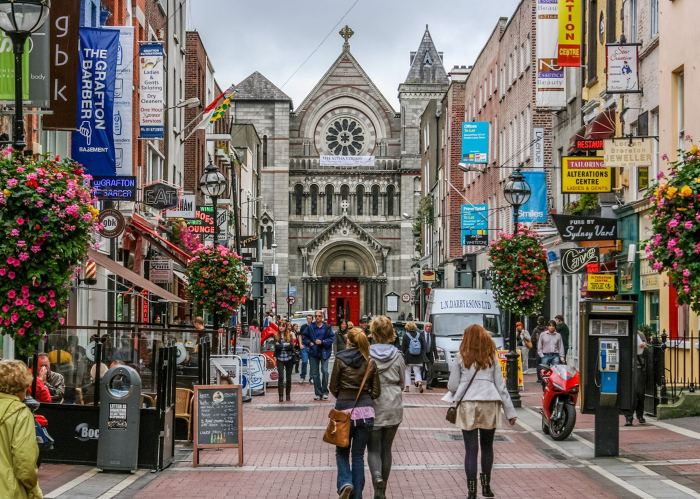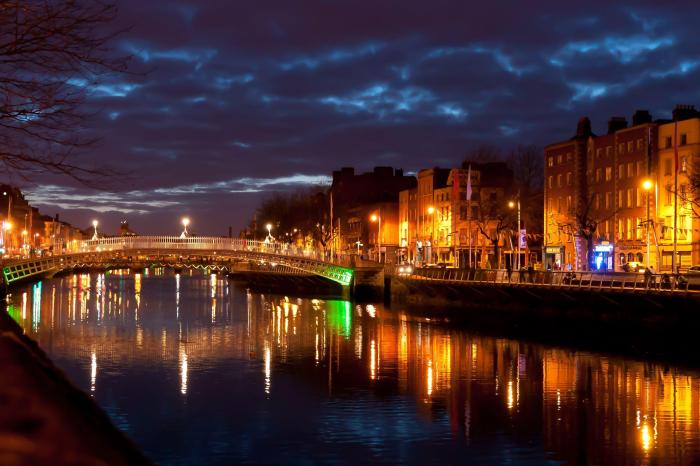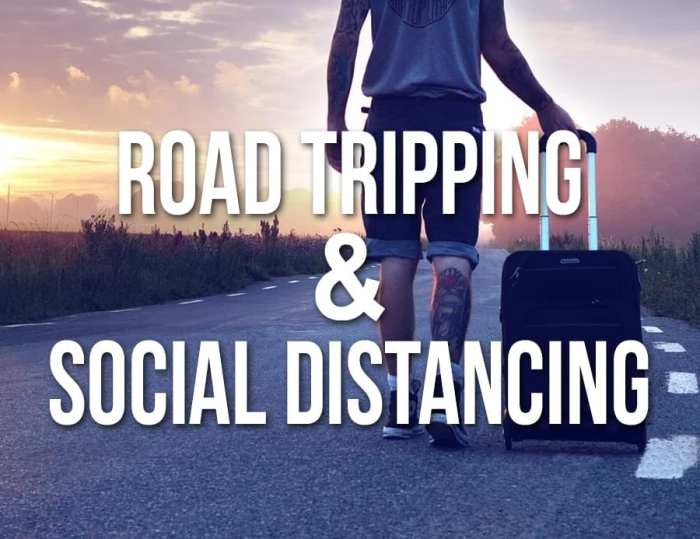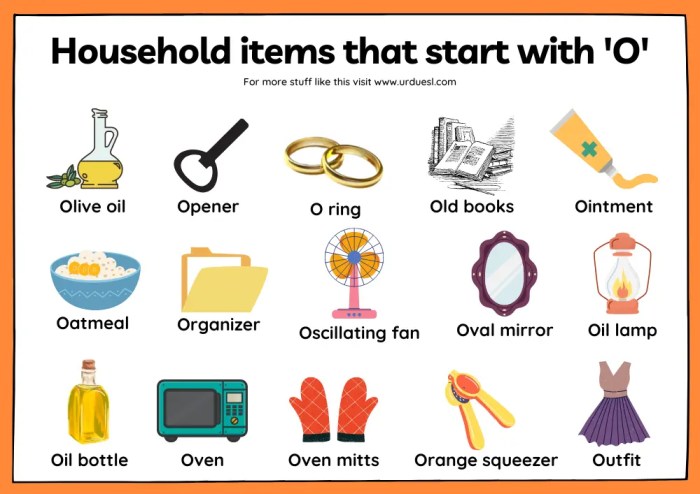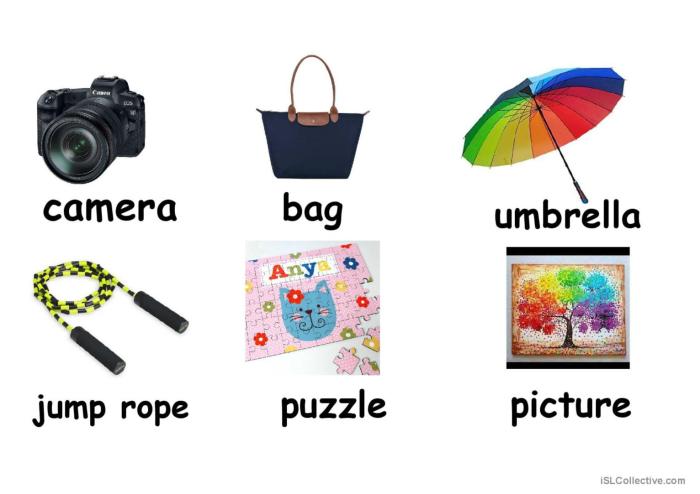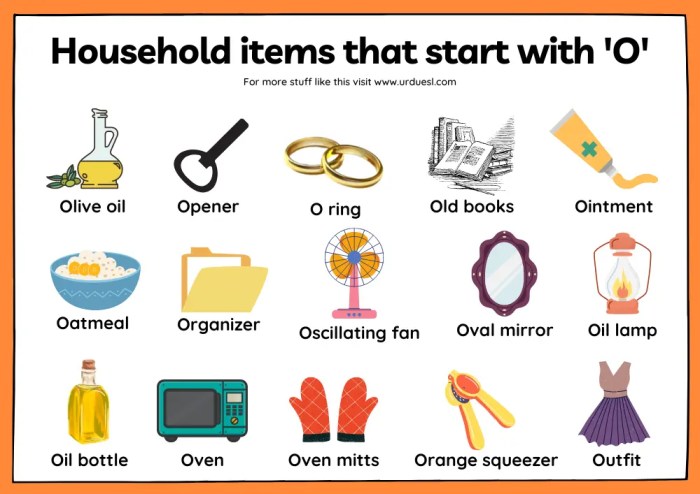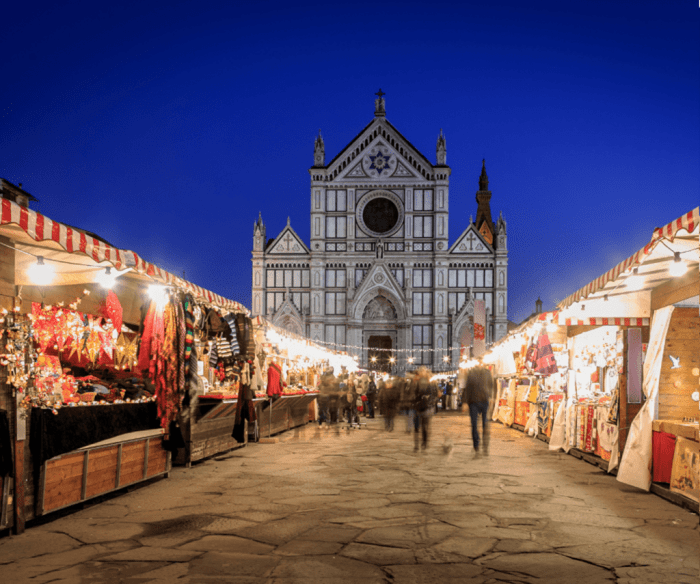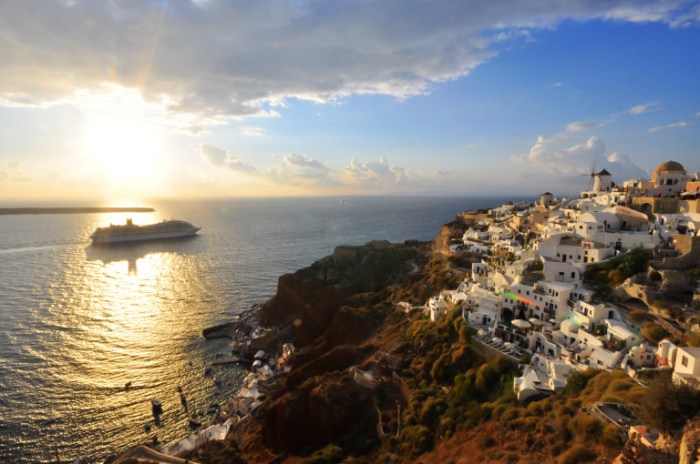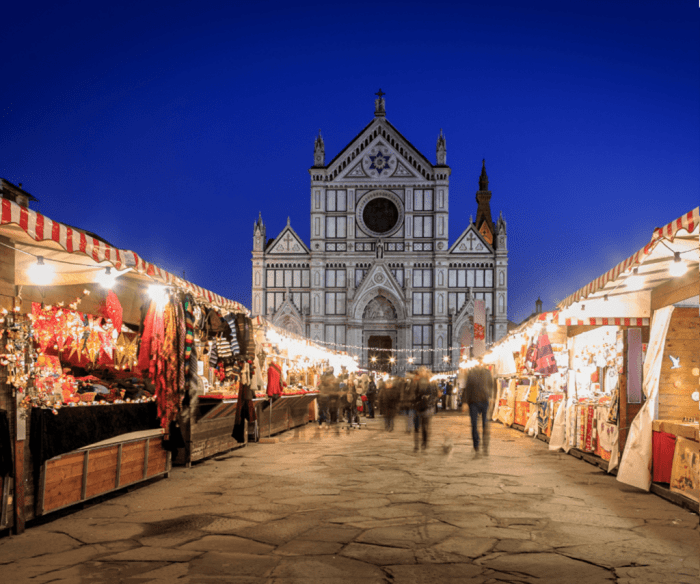First time Dubai top tips: Embark on your Dubai adventure with confidence! This comprehensive guide unpacks everything you need to know for a memorable trip. From navigating the city’s unique culture to finding the perfect accommodation, we’ll cover must-see attractions, delicious dining experiences, and savvy shopping strategies. Plus, essential tips for a smooth and safe journey await.
This guide dives deep into the intricacies of experiencing Dubai as a first-time visitor. We’ll break down the city’s diverse offerings, from bustling markets to luxurious shopping malls, ensuring you make the most of your trip. Discover hidden gems and local favorites, and uncover the best ways to navigate the city’s impressive infrastructure.
Introduction to Dubai for First-Timers
Dubai, a city of breathtaking skyscrapers and vibrant culture, beckons first-time visitors with its unique blend of tradition and modernity. From the towering Burj Khalifa to the serene desert landscapes, Dubai offers a diverse range of experiences. It’s a city where ancient souks meet futuristic architecture, and the desert meets the sea. Prepare to be amazed by its sheer scale and captivating atmosphere.This guide provides a concise overview of Dubai, focusing on essential cultural insights, practical transportation details, and a sample itinerary to help you navigate this captivating metropolis.
It will highlight the city’s unique characteristics and provide a foundation for an unforgettable trip.
Cultural Nuances and Etiquette
Dubai is a multicultural society, and understanding local customs is essential for a respectful and enjoyable visit. Modesty in dress is particularly important when visiting religious sites. Dress modestly, covering shoulders and knees, especially when visiting mosques or religious areas. Furthermore, maintaining a respectful demeanor is appreciated in all public spaces. Showing respect for local traditions and customs will greatly enhance your interactions and create positive impressions.
Avoid public displays of affection and remember that noise levels should be kept moderate in public areas.
Dubai’s Transportation System
Dubai boasts an efficient and comprehensive transportation network. The metro system is a convenient and affordable way to navigate the city, connecting major attractions and residential areas. It operates efficiently and is generally well-maintained, providing a smooth and reliable mode of transportation. Taxis are readily available and are a practical option for shorter trips or when the metro doesn’t reach your destination.
Ride-sharing services are also a viable choice, offering convenience and flexibility. Be mindful of traffic rules and regulations, especially during peak hours.
A Sample Itinerary for First-Time Visitors
This itinerary provides a framework for a first-time visitor, balancing popular attractions with local experiences.
- Day 1: Iconic Landmarks and Desert Adventure
-Begin your Dubai adventure with a visit to the Burj Khalifa, the world’s tallest building, for breathtaking panoramic views. Afterwards, explore the Dubai Mall, a vast shopping and entertainment complex. In the evening, embark on a thrilling desert safari experience, complete with dune bashing, camel riding, and traditional Emirati dinner. This will give you an authentic feel of the Arabian desert. - Day 2: Culture and Shopping
-Immerse yourself in Dubai’s rich culture by visiting the Dubai Museum, showcasing the city’s history and heritage. Explore the vibrant atmosphere of the Gold Souk and Spice Souk, experiencing the bustling markets and bargaining for unique treasures. Conclude your day with a delicious Emirati dinner and cultural performances. - Day 3: Modern Marvels and Relaxation
-Experience the stunning architectural marvels of Dubai Frame and the impressive Atlantis, The Palm. Enjoy a leisurely afternoon by the beach, taking in the stunning views of the Arabian Gulf. Consider a traditional Emirati dinner cruise for a unique perspective of the city’s skyline.
Accommodation Options and Recommendations
Choosing the right accommodation is crucial for a smooth and enjoyable Dubai experience. From luxurious hotels to cozy apartments, Dubai offers a diverse range of options to suit every budget and preference. Understanding the differences between these types and considering your priorities will help you select the perfect place to call home during your stay.Dubai’s accommodation scene caters to a wide spectrum of travellers, from budget-conscious backpackers to high-end luxury seekers.
Careful consideration of your needs and desires, such as desired level of service, proximity to attractions, and your budget, will lead to a more satisfying stay.
Hotel Accommodations
Hotels in Dubai offer a range of services and amenities, from basic necessities to extravagant extras. Their central locations often make them convenient for exploring the city’s many attractions. However, hotel prices can fluctuate significantly depending on the season and the hotel’s star rating.
- Luxury Hotels: These hotels provide a high level of service, often with exceptional amenities like gourmet restaurants, spas, and swimming pools. They usually boast stunning views and are located in prime locations, sometimes close to major shopping malls or business districts. Examples include the Burj Al Arab, and the Armani Hotel Dubai.
- Mid-Range Hotels: These hotels strike a balance between luxury and budget-friendliness, providing comfortable accommodations with a range of amenities like swimming pools, restaurants, and fitness centers. They are often situated in well-connected areas with easy access to public transportation or taxis.
- Budget-Friendly Hotels: These hotels prioritize affordability without compromising on essential services like clean rooms and basic amenities. They are often strategically located near metro stations or bus stops, making them convenient for travellers seeking cost-effective accommodation.
Apartment Accommodations
Apartments provide more space and flexibility than hotels, allowing for self-catering and independent exploration. They are often a more cost-effective option for longer stays, especially for families or groups. However, some may lack the 24/7 service and concierge support that hotels offer.
- Serviced Apartments: These apartments offer fully equipped kitchens and living spaces, providing a sense of home. They typically come with amenities like laundry facilities and housekeeping services, making them an ideal option for families or groups looking for independence and convenience.
- Self-Catering Apartments: These apartments are fully equipped for self-catering, providing kitchens, dining areas, and often laundry facilities. This offers complete independence and can be more economical for longer stays. However, you are responsible for all housekeeping.
Resort Accommodations
Resorts often offer a more secluded and relaxing experience, with extensive amenities like private beaches, multiple swimming pools, and various dining options. These are excellent choices for those seeking a getaway experience away from the hustle and bustle of the city. However, they are typically further from the city center.
- Beachfront Resorts: These resorts are ideally situated near the beach, providing easy access to swimming, sunbathing, and water sports. They are often popular with families or couples looking for a relaxing holiday experience.
- Theme-Based Resorts: These resorts cater to specific interests or themes, such as water parks or entertainment, and provide tailored experiences for guests. They often have dedicated areas for specific activities, and are great for families or groups seeking unique activities.
Factors to Consider When Choosing Accommodation
When selecting accommodation, consider your budget, the desired location, and the kind of experience you seek.
- Budget: Establish a realistic budget before you start looking. Hotels, apartments, and resorts have various price ranges. Factor in costs like meals, transportation, and activities.
- Location: Think about the proximity to attractions, shopping malls, and transportation hubs. A central location can save time and money on travel, but it may also increase accommodation costs.
- Desired Experience: Do you prefer a luxurious hotel experience, the independence of an apartment, or the secluded relaxation of a resort? Your choice should reflect your priorities and preferences.
Comparison Table
| Accommodation Type | Price Range (approx.) | Proximity to Attractions | Amenities |
|---|---|---|---|
| Luxury Hotel (e.g., Burj Al Arab) | High | Excellent | Extensive amenities, gourmet dining, 24/7 service |
| Serviced Apartment (e.g., in Downtown Dubai) | Medium | Good | Fully equipped kitchen, laundry, housekeeping |
| Beachfront Resort (e.g., in Jumeirah) | Medium to High | Good (depending on location) | Swimming pools, private beach access, dining options |
Must-See Attractions and Experiences

Dubai, a city of contrasts, seamlessly blends modern marvels with ancient traditions. Beyond the gleaming skyscrapers and opulent hotels lies a wealth of experiences waiting to be discovered. From iconic landmarks to immersive cultural immersions, this guide highlights must-see attractions and alternative activities that will leave a lasting impression on first-time visitors.Immerse yourself in the vibrant tapestry of Dubai’s attractions, meticulously crafted to cater to diverse interests.
So, you’re hitting Dubai for the first time? Awesome! Beyond the iconic Burj Khalifa, exploring the best neighborhoods in Valencia, Spain, can actually give you some surprisingly helpful insights for navigating Dubai. For example, if you’re looking for a vibrant atmosphere with excellent food and a bustling local scene, neighborhoods like the El Carmen area in Valencia might give you a good idea of the kinds of places to explore in Dubai’s own vibrant areas like Deira or Al Fahidi.
So, remember to check out the best neighborhoods in Valencia for some inspiration when planning your Dubai adventure! best neighborhoods in valencia. Ultimately, though, the key to a great first-time Dubai trip is to be open to exploring and discovering hidden gems.
Explore architectural marvels, delve into rich cultural heritage, and embrace adrenaline-pumping adventures. This section provides actionable insights into maximizing your Dubai experience, whether you choose to embark on guided tours or prefer independent exploration.
Top 5 Must-See Attractions
Dubai boasts an impressive array of iconic landmarks. These five attractions represent a compelling introduction to the city’s multifaceted character, offering diverse experiences that cater to various interests.The Burj Khalifa, a towering testament to human ingenuity, stands as a symbol of Dubai’s ambition and technological prowess. Its breathtaking views from the observation deck offer a panoramic perspective of the city’s skyline.
Visitors can choose between pre-booked tickets to avoid queues or opt for independent exploration, allowing for flexible timings. The Dubai Mall, a shopper’s paradise, is an architectural masterpiece in itself. Beyond the endless retail options, it houses a captivating aquarium and underwater zoo, an ice rink, and a cinema complex, making it a must-visit destination for families and individuals alike.
The Dubai Mall offers diverse experiences, ranging from shopping and dining to interactive entertainment.The Jumeirah Mosque, a beautiful example of Islamic architecture, allows visitors to gain insights into the cultural values and practices of the local community. Respectful observation, combined with guided tours, provides a deep understanding of Islamic faith and heritage.The Palm Jumeirah, an artificial archipelago shaped like a palm tree, presents a remarkable feat of engineering.
So, you’re heading to Dubai for the first time? Awesome! For top tips, definitely consider the amazing hotels and resorts available, especially if you’re looking for a family-friendly getaway. Checking out options like hotels resorts mountain ski resorts best family friendly ski might give you some cool ideas for places to stay, but remember Dubai’s got plenty of fantastic hotels to choose from for all kinds of travelers.
Don’t forget to factor in the desert adventures and the incredible shopping malls while you’re planning!
Visitors can enjoy the luxurious hotels, stunning beaches, and a range of activities such as water sports. The Palm Jumeirah, a testament to Dubai’s ambitious vision, offers an experience of both luxury and relaxation.The Dubai Frame, a modern architectural wonder, offers a unique perspective of the old and new Dubai. Its design allows for stunning views of both the traditional and modern facets of the city, providing a perfect photo opportunity.
Guided tours can be an excellent way to understand the historical context of the different areas showcased.
Alternative Experiences
Dubai offers more than just iconic landmarks. Alternative experiences cater to diverse interests, providing opportunities to explore the local culture, connect with nature, and immerse yourself in the city’s vibrant spirit.Desert safaris provide an opportunity to experience the vastness and tranquility of the Arabian desert. These safaris often include dune bashing, camel riding, and traditional Emirati cultural performances, providing an authentic glimpse into the region’s heritage.
First-time Dubai trips are amazing! Snapping some Insta-worthy pics at the Burj Khalifa is a must, and don’t forget to explore the souks. However, it’s important to consider the impact our travel choices have on the environment. For example, the devastating coral bleaching events affecting the Great Barrier Reef, like the recent loss of coral reported in great barrier reef lost coral , should encourage us to be more mindful travelers.
Fortunately, Dubai has incredible sustainable initiatives, and you can still have a fantastic time while minimizing your footprint.
Independent exploration is also possible, allowing visitors to choose their own pace and activities.Cultural tours offer a deep dive into the history, traditions, and values of the local Emirati culture. These tours typically include visits to traditional markets, historical sites, and cultural centers, offering visitors an in-depth understanding of Emirati heritage.Local markets, such as the Gold Souk and Spice Souk, are vibrant hubs of activity, offering a glimpse into the city’s bustling trading history.
These markets showcase unique crafts, spices, and traditional goods, allowing visitors to immerse themselves in the city’s atmosphere and engage with local artisans.
Activities by Category
| Category | Activity | Description |
|---|---|---|
| Historical | Jumeirah Mosque | Explore a beautiful example of Islamic architecture and gain insights into Islamic faith and heritage. |
| Cultural | Gold Souk | Immerse yourself in the vibrant atmosphere of a traditional market, witnessing unique crafts and local trading traditions. |
| Adventurous | Desert Safari | Experience the vastness of the Arabian desert through dune bashing, camel riding, and traditional cultural performances. |
| Architectural | Burj Khalifa | Ascend the tallest building in the world for breathtaking panoramic views of Dubai’s skyline. |
| Relaxing | Palm Jumeirah | Enjoy the luxurious hotels, stunning beaches, and various water sports activities at this man-made archipelago. |
Food and Dining in Dubai
Dubai’s culinary scene is a vibrant tapestry woven from threads of tradition and global influence. From bustling souks overflowing with aromatic spices to Michelin-starred restaurants showcasing innovative cuisine, the city offers a diverse and unforgettable dining experience for every palate and budget. Whether you crave authentic Emirati dishes, crave a taste of Italy, or yearn for a sophisticated fine-dining experience, Dubai has something to tantalize your taste buds.Dubai’s restaurants reflect the city’s cosmopolitan nature.
The fusion of cultures is evident in the unique dishes and flavors that are readily available, allowing visitors to sample dishes from across the world in one destination. This fusion creates a culinary landscape that is both familiar and exciting, with new and inventive dishes constantly being created.
Traditional Emirati Cuisine
Emirati cuisine is rooted in the region’s rich history and desert lifestyle. It often utilizes fresh, local ingredients and features hearty dishes perfect for warming up during the hotter months. Expect a focus on flavorful spices and a reliance on simple, yet satisfying, preparation methods.
- Machboos: A staple of Emirati cuisine, Machboos is a fragrant rice dish typically prepared with meat, often chicken or lamb, and aromatic spices like saffron and turmeric. It’s a flavorful and filling meal that showcases the region’s culinary heritage.
- Harees: This savory wheat-based dish is a popular comfort food in the region, often enjoyed during special occasions. Its creamy texture and rich flavors make it a true Emirati delicacy.
- Luqaimat: These delectable fried dough balls are often served with sweet syrup and are a delightful dessert, showcasing a traditional Emirati treat. They’re often found at local cafes and restaurants.
International Dining Options
Dubai boasts a remarkable array of international restaurants, catering to a wide range of tastes and preferences. From traditional Italian pasta dishes to Japanese sushi, the city’s global culinary landscape is impressive.
- Italian Cuisine: Dubai is home to a plethora of Italian restaurants, from casual trattorias to upscale fine dining establishments. Expect fresh pasta, authentic pizzas, and flavorful regional specialties.
- Indian Cuisine: With a significant Indian expat community, Dubai offers a fantastic range of Indian restaurants, showcasing the diverse culinary traditions of the country. From north Indian to south Indian, a variety of cuisines are readily available. Expect to find a variety of curries, tandoori dishes, and flavorful breads.
- Japanese Cuisine: For those seeking authentic Japanese dining, Dubai’s numerous sushi restaurants and ramen shops offer delectable experiences. Expect fresh seafood and a wide selection of Japanese specialties.
Dining Experiences
Dubai’s culinary scene offers a variety of dining experiences to choose from, catering to different preferences and budgets.
- Street Food: Dubai’s bustling souks and markets often offer a taste of street food. Explore the diverse range of options, from falafel to shawarma, and enjoy the vibrant atmosphere. This is an ideal way to experience authentic local flavors at an affordable price.
- Fine Dining: Dubai boasts a number of Michelin-starred restaurants, providing an elevated dining experience with innovative cuisine, exceptional service, and impeccable ambiance. These restaurants offer an exquisite culinary journey.
- Themed Restaurants: Dubai’s themed restaurants offer a unique dining experience, from Arabian nights to futuristic landscapes. These themed venues provide a distinctive atmosphere and often showcase a blend of culinary traditions.
Affordable Dining Recommendations
Dubai offers a range of affordable dining options that won’t break the bank, allowing visitors to experience the city’s culinary delights without excessive spending.
- Local Cafes: Many local cafes serve up affordable and delicious Emirati dishes. These establishments often provide a welcoming atmosphere and a chance to experience local cuisine.
- Food Courts: Food courts in malls and shopping centers offer a variety of cuisines at competitive prices. They’re an excellent choice for budget-conscious travelers.
- Souk Restaurants: Restaurants within the souks offer traditional Emirati dishes at reasonable prices. These venues offer a chance to experience authentic cuisine in a historic setting.
Shopping and Souvenirs

Dubai’s shopping scene is a dazzling spectacle, offering everything from high-end luxury to vibrant souks brimming with local crafts. From the towering malls to the bustling markets, there’s a shopping experience for every taste and budget. Whether you’re a bargain hunter seeking unique treasures or a luxury shopper in search of designer goods, Dubai has it all.The sheer variety of shopping options is a defining characteristic of Dubai.
From the iconic Burj Khalifa to the traditional souks, each location offers a distinct atmosphere and range of goods. This diversity caters to a wide range of interests, ensuring an unforgettable shopping adventure for all visitors.
Popular Malls and Markets
Dubai boasts a plethora of shopping malls, each with its own unique character. These impressive structures house everything from international brands to local crafts. The city’s souks, with their narrow alleys and bustling atmosphere, offer a completely different shopping experience.
- Mall of the Emirates: Known for its diverse range of brands, including international fashion houses, department stores, and entertainment options like the indoor ski slope, this mall caters to a wide spectrum of interests.
- Dubai Mall: This massive complex is home to numerous international brands, an aquarium, ice rink, and the iconic Dubai Aquarium and Underwater Zoo. It offers a comprehensive shopping experience.
- The Dubai Mall, Souks, and Gold Souk: The Dubai Mall, with its diverse collection of stores, stands as a prominent retail destination. Adjacent to the Dubai Mall, the souks offer a chance to experience traditional shopping in a vibrant atmosphere, while the Gold Souk provides an opportunity to discover exquisite gold jewelry and other precious metals.
Unique Souvenirs
Dubai’s rich cultural heritage is reflected in its unique souvenirs. Beyond the typical tourist trinkets, there are authentic local crafts and gifts that showcase the region’s artistry.
- Local Crafts: Explore the souks for handcrafted items like intricately carved wooden boxes, woven carpets, and traditional perfumes. These offer a glimpse into the region’s cultural heritage and make memorable gifts.
- Gold and Silver Jewelry: Dubai is renowned for its gold and silver jewelry. The intricate designs and craftsmanship are exceptional, making these beautiful pieces ideal souvenirs.
- Traditional Spices and Perfumes: Immerse yourself in the aromatic world of Arabian spices and perfumes. Buy unique blends or exquisite fragrances to take home a piece of the region’s distinctive aroma.
Shopping Experiences
Dubai offers diverse shopping experiences, catering to varying preferences and budgets. From bargain hunting in traditional souks to luxurious shopping sprees in upscale malls, there’s a unique experience for everyone.
- Bargaining: A crucial aspect of shopping in the souks is bargaining. It’s a traditional practice and an integral part of the experience. Be prepared to haggle politely and respectfully, as it’s often expected.
- Luxury Shopping: Dubai’s malls house flagship stores of world-renowned luxury brands. This offers a unique opportunity to indulge in high-end fashion, accessories, and more.
- Specialized Markets: The specialized markets in Dubai cater to specific needs. For example, the Gold Souk caters to those seeking exquisite gold jewelry, while other markets offer unique handicrafts.
Shopping Areas Comparison
| Shopping Area | Offerings | Atmosphere |
|---|---|---|
| Dubai Mall | International brands, entertainment, aquarium, ice rink | Modern, bustling, upscale |
| Souks | Local crafts, spices, perfumes, gold | Traditional, vibrant, often crowded |
| Mall of the Emirates | International brands, department stores, indoor ski slope | Modern, spacious, family-friendly |
Practical Tips and Advice
Embarking on a trip to Dubai requires careful planning to ensure a smooth and enjoyable experience. This section provides essential practical advice, covering visa requirements, currency exchange, packing essentials, and local customs. Knowing these details beforehand can help you navigate the city with ease and confidence.Understanding the local customs and regulations is crucial for a respectful and seamless trip.
Dubai, while modern and cosmopolitan, still maintains a strong cultural identity. By being aware of these nuances, you can show respect and avoid any potential misunderstandings.
Visa Requirements and Entry Documents
Visa requirements for entry into Dubai vary depending on your nationality. It is essential to check the official website of the UAE Ministry of Foreign Affairs or your embassy for the most up-to-date information. Ensure you have all necessary documents, including a valid passport, visa (if required), and any other supporting documentation specified by the authorities. Failure to comply with visa regulations can lead to delays or denial of entry.
Currency Exchange and Payment Options
The official currency of the UAE is the UAE Dirham (AED). While major credit cards are widely accepted, it’s always prudent to carry some local currency for smaller purchases or less accessible locations. Exchange rates can fluctuate, so compare rates from various exchange bureaus before making your exchange. Many hotels and shops accept major international credit and debit cards, but some smaller establishments might prefer cash transactions.
Essential Packing Tips
Packing for a trip to Dubai requires careful consideration of the climate and local customs. Dubai enjoys a hot desert climate, so lightweight, breathable clothing is essential. Pack comfortable walking shoes, as you’ll be doing a lot of exploring on foot. For evenings, you might need a light jacket or sweater, as the desert evenings can cool down considerably.
Remember to check the weather forecast before your trip and adjust your packing accordingly.
- Clothing: Pack light, breathable clothing, including comfortable walking shoes, a light jacket or sweater for cooler evenings, and appropriate attire for religious sites (e.g., modest clothing).
- Electronics: Ensure your electronics (phones, cameras, etc.) are compatible with the local power outlets (220V, 50Hz). Pack any necessary adapters.
- Personal Items: Don’t forget essential toiletries, medications, and any personal items you need for your comfort and well-being. Sunscreen is highly recommended for protection against the intense sun.
Local Time Zone, Language, and Customs
Dubai observes the Arabian Standard Time (AST), which is UTC+4. Knowing the time difference from your home country is crucial for scheduling flights and appointments. While English is widely spoken, learning a few basic Arabic phrases can be appreciated by locals.
| Aspect | Details |
|---|---|
| Time Zone | UTC+4 |
| Language | Arabic is the official language, but English is widely spoken. |
| Local Customs | Dress modestly when visiting religious sites or traditional areas. Avoid public displays of affection. |
“Respecting local customs is essential for a positive travel experience.”
Transportation and Getting Around
Navigating Dubai is a breeze, thanks to its efficient and varied transportation network. From ultramodern metro systems to readily available taxis and ride-sharing services, you’ll find plenty of options to suit your needs and budget. This section details the different methods, their costs, and how to make the most of Dubai’s public transport.Dubai offers a comprehensive and interconnected transportation system, making it easy to get around the city.
Whether you’re exploring the bustling souks, visiting iconic landmarks, or simply hopping between different neighborhoods, the city has you covered.
Various Transportation Methods, First time dubai top tips
Dubai boasts a diverse array of transportation options, each catering to different needs and preferences. Taxis are readily available, providing a convenient door-to-door service. Ride-sharing apps are another popular choice, often offering competitive pricing. The extensive metro and tram networks offer a cost-effective and efficient way to travel across the city, connecting major destinations and landmarks. Bus services provide another affordable option for reaching various areas, especially those less accessible by metro or tram.
Cost-Effectiveness of Transportation Options
The cost-effectiveness of each transportation method varies. Taxis and ride-sharing services can be expensive for longer journeys, but they offer flexibility and convenience. Public transportation, such as the metro and trams, provides a much more economical option for covering extensive distances. Buses, while often the most affordable, may require more time and may not always have routes covering every destination.
Using Public Transportation Effectively
The Dubai Metro is a remarkably efficient and user-friendly system. The metro network covers most of the city, with clearly marked stations and signage. Purchase a Nol card for convenient and hassle-free travel; it allows you to pay for your rides directly. Furthermore, utilize the city’s comprehensive maps and online resources to plan your routes and anticipate travel times.
Comparison Table of Transportation Options
| Transportation Method | Cost | Convenience | Travel Time |
|---|---|---|---|
| Taxi | Variable, higher for longer distances | High, door-to-door service | Variable, depends on traffic |
| Ride-sharing services | Competitive, often cheaper for longer distances | High, door-to-door service | Variable, depends on traffic |
| Metro | Low, per ride fare | High, efficient and extensive network | Generally faster |
| Tram | Low, per ride fare | High, efficient and extensive network | Generally faster |
| Bus | Low, per ride fare | Moderate, frequent but not always direct | Variable, depends on route and traffic |
Safety and Security Considerations
Dubai is a remarkably safe city, but like any bustling metropolis, it’s essential to take precautions. Understanding the local norms and potential risks allows you to enjoy your trip worry-free. This section provides practical advice to help you stay safe and secure during your visit.
General Safety Advice for First-Time Visitors
Dubai is known for its advanced security measures and generally low crime rate. However, common sense precautions are always advisable. Be mindful of your belongings, especially in crowded areas like souks and tourist attractions. Avoid displaying expensive jewelry or electronics openly. Choose well-lit and populated areas for walking at night.
Staying Safe While Exploring the City
To ensure a smooth and safe exploration, be vigilant about your surroundings. Pay attention to your surroundings, especially in crowded areas. If you feel uncomfortable, move to a more populated area or seek assistance from security personnel. Report any suspicious activity to the nearest security guard or authority.
Precautions Against Petty Theft and Scams
Dubai, while generally safe, isn’t immune to petty theft or scams. Be wary of individuals offering unsolicited assistance or goods. Keep your valuables secure, using hotel safes or secure pockets when possible. Avoid isolated areas, especially at night. Do thorough research before engaging with unfamiliar vendors or services.
Be cautious of overly-friendly strangers.
Emergency Contact Numbers and Local Support Services
Knowing the emergency numbers and support services available is crucial. These numbers can help in unforeseen situations. Dubai has excellent emergency services, ensuring quick response times. Familiarize yourself with local authorities, like the police or ambulance services.
Concise Guide to Staying Safe in Dubai
| Emergency Contact | Number | Description |
|---|---|---|
| Dubai Police | 999 | For emergencies, including theft, accidents, or other serious situations. |
| Dubai Ambulance | 998 | For medical emergencies. |
| Dubai Fire and Rescue | 992 | For fire incidents or other rescue needs. |
| Local Authorities | Consult your hotel or tourist information center. | For further assistance, especially with issues like lost documents or personal safety concerns. |
Closure: First Time Dubai Top Tips
So, there you have it – a complete toolkit for your Dubai adventure! From cultural immersion to culinary exploration, and from luxurious shopping to desert escapades, this guide equips you to fully embrace the vibrant energy of Dubai. Enjoy your trip!






